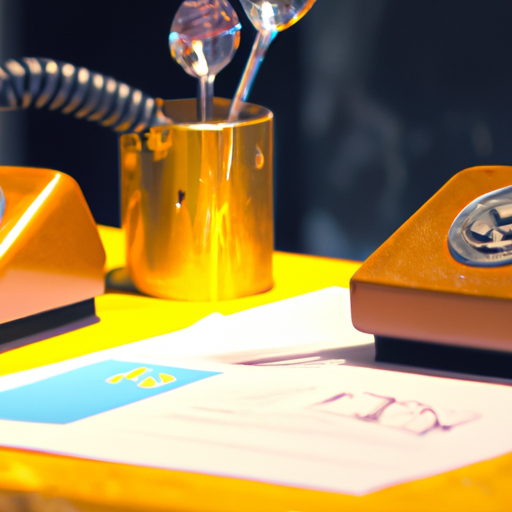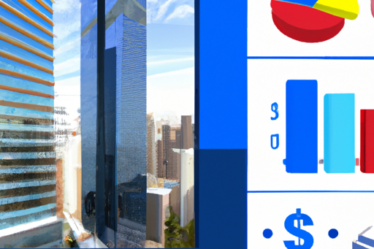
Importance of Tracking Call Volume in Hotel Call Centers
When it comes to running a successful hotel call center, tracking key metrics is essential. One of the most important metrics to monitor is call volume. By keeping a close eye on the number of calls coming into your call center, you can gain valuable insights into the efficiency and effectiveness of your operations.
Tracking call volume allows you to understand the demand for your services. By knowing how many calls are coming in, you can determine if you have enough staff to handle the volume. If you consistently have a high call volume and not enough agents to handle the calls, it may be time to consider hiring additional staff or implementing new technology to help manage the workload.
In addition to understanding demand, tracking call volume can also help you identify trends and patterns. By analyzing the data over time, you may notice that certain days or times of the year have higher call volumes. This information can be used to better allocate resources and ensure that you have enough staff available during peak times.
Another benefit of tracking call volume is the ability to measure the success of marketing campaigns. If you launch a new advertising campaign or promotion, you can track the number of calls that come in during the campaign period. By comparing this data to your baseline call volume, you can determine if the campaign was successful in generating interest and driving calls to your call center.
Tracking call volume can also help you identify areas for improvement in your call center operations. For example, if you notice a high number of abandoned calls, it may indicate that callers are experiencing long wait times or are not being properly routed to the appropriate agent. By addressing these issues, you can improve the overall customer experience and increase customer satisfaction.
There are several ways to track call volume in your hotel call center. One option is to use call tracking software, which can provide real-time data on the number of calls coming in, as well as other metrics such as call duration and wait times. This software can also generate reports and analytics to help you make data-driven decisions.
Another option is to manually track call volume using a spreadsheet or other tracking tool. While this method may be more time-consuming, it can still provide valuable insights into your call center operations. By recording the number of calls received each day, you can easily identify trends and patterns over time.
In conclusion, tracking call volume is an important metric for hotel call centers. By understanding the demand for your services, identifying trends and patterns, measuring the success of marketing campaigns, and identifying areas for improvement, you can optimize your call center operations and provide a better customer experience. Whether you choose to use call tracking software or manually track call volume, the insights gained from this metric can help drive the success of your hotel call center.
Analyzing Average Call Duration for Effective Resource Allocation in Hotel Call Centers

When it comes to running a successful hotel call center, there are several key metrics that managers need to analyze in order to ensure effective resource allocation. One of the most important metrics to consider is average call duration. By understanding how long calls typically last, managers can make informed decisions about staffing levels and training needs.
Average call duration is a measure of the average amount of time it takes for a call to be completed. This metric is important because it provides insight into the efficiency of the call center. If calls are taking too long, it could indicate that agents are not properly trained or that there are issues with the technology being used. On the other hand, if calls are too short, it could suggest that agents are rushing through calls and not providing the level of service that guests expect.
Analyzing average call duration can help managers identify areas for improvement. For example, if the average call duration is longer than desired, it may be necessary to provide additional training to agents. This could include teaching them how to handle difficult or complex calls more efficiently, or providing them with tools and resources to help them resolve issues more quickly. By addressing these issues, managers can help reduce call times and improve overall customer satisfaction.
In addition to training, analyzing average call duration can also help managers determine the optimal number of agents needed to handle call volume. If calls are taking longer than desired, it may be necessary to increase staffing levels to ensure that guests are not kept waiting on hold for extended periods of time. On the other hand, if calls are consistently short, it may be possible to reduce staffing levels without sacrificing service quality.
Another benefit of analyzing average call duration is that it can help managers identify trends and patterns. For example, if call times are consistently longer during certain times of the day or week, it may indicate that additional staffing is needed during those periods. By identifying these trends, managers can make more informed decisions about scheduling and resource allocation.
It’s important to note that average call duration should not be the only metric used to evaluate the performance of a hotel call center. Other metrics, such as call abandonment rate and customer satisfaction scores, should also be considered. However, average call duration is a valuable metric that can provide valuable insights into the efficiency and effectiveness of the call center.
In conclusion, analyzing average call duration is a key metric for hotel call centers. By understanding how long calls typically last, managers can make informed decisions about staffing levels and training needs. This metric can help identify areas for improvement, determine optimal staffing levels, and identify trends and patterns. While average call duration should not be the sole metric used to evaluate performance, it is an important tool for ensuring effective resource allocation in hotel call centers.
Measuring Customer Satisfaction through Call Center Key Metrics in the Hotel Industry
Measuring Customer Satisfaction through Call Center Key Metrics in the Hotel Industry
In the hotel industry, customer satisfaction is of utmost importance. Hotel call centers play a crucial role in ensuring that guests have a positive experience from the moment they make a reservation to the time they check out. To gauge customer satisfaction, hotel call centers rely on key metrics that provide valuable insights into the quality of service they provide. These metrics help identify areas of improvement and ensure that guests’ needs are met efficiently and effectively.
One of the most important metrics for hotel call centers is the average speed of answer (ASA). This metric measures the time it takes for a call to be answered by a call center agent. A low ASA indicates that calls are being answered promptly, which is crucial for providing excellent customer service. By monitoring ASA, hotel call centers can identify any bottlenecks in their call handling process and take necessary steps to reduce wait times.
Another key metric is the first call resolution (FCR) rate. FCR measures the percentage of calls that are resolved during the first interaction with a call center agent. A high FCR rate indicates that call center agents are knowledgeable and empowered to address guests’ concerns effectively. This metric is particularly important in the hotel industry, where guests expect quick and efficient solutions to their problems. By focusing on improving FCR, hotel call centers can enhance customer satisfaction and reduce the need for guests to make multiple calls for the same issue.
Customer satisfaction surveys are also an essential tool for measuring the effectiveness of hotel call centers. These surveys provide guests with an opportunity to provide feedback on their experience with the call center. By analyzing survey responses, hotel call centers can gain valuable insights into areas where they excel and areas that need improvement. This feedback helps call center agents understand guests’ expectations better and tailor their service accordingly. Additionally, customer satisfaction surveys allow hotel call centers to identify trends and patterns in guest feedback, enabling them to make informed decisions to enhance the overall guest experience.
Another metric that hotel call centers use to measure customer satisfaction is the average handle time (AHT). AHT measures the average duration of a call, including the time spent talking to the guest and any after-call work. A low AHT indicates that call center agents are efficient in handling calls, providing quick resolutions to guests’ inquiries. However, it is essential to strike a balance between a low AHT and providing quality service. Call center agents should not rush through calls at the expense of guest satisfaction. By monitoring AHT, hotel call centers can identify opportunities for process improvements and agent training to ensure that calls are handled efficiently without compromising service quality.
Lastly, call abandonment rate is a metric that hotel call centers closely monitor. This metric measures the percentage of calls that are abandoned by guests before being answered by a call center agent. A high call abandonment rate indicates that guests are experiencing long wait times or are unable to reach a call center agent. This can be detrimental to customer satisfaction and may result in lost business. By addressing the factors contributing to a high call abandonment rate, such as staffing issues or system inefficiencies, hotel call centers can ensure that guests’ calls are answered promptly, reducing frustration and improving overall satisfaction.
In conclusion, measuring customer satisfaction through key metrics is vital for hotel call centers. Metrics such as ASA, FCR, customer satisfaction surveys, AHT, and call abandonment rate provide valuable insights into the quality of service provided by call center agents. By monitoring and analyzing these metrics, hotel call centers can identify areas for improvement, enhance the guest experience, and ultimately increase customer satisfaction.


